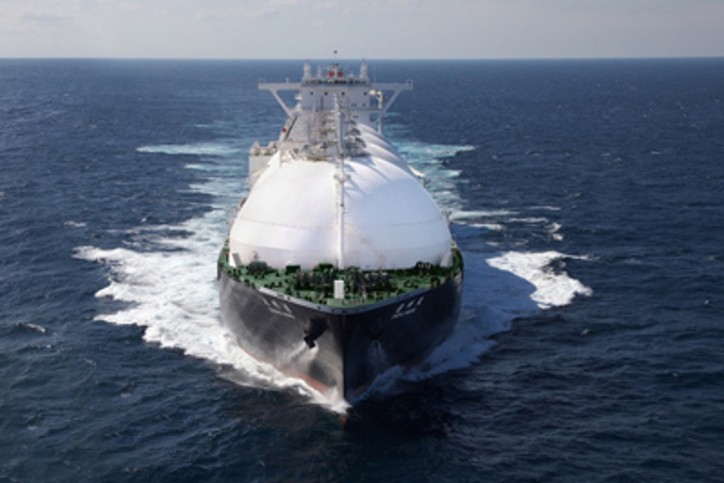Kawasaki Heavy Industries, Ltd. Friday delivered the ENSHU MARU (Kawasaki hull no. 1720), a 164,700 m3 capacity liquefied natural gas (LNG) transport vessel for use by Kawasaki Kisen Kaisha, Ltd. ("K" Line) and Tokyo Century Corporation.

The third of Kawasaki's line of 164,700 m3 capacity LNG carriers to be commissioned, this ship is designed to enable passage through the newly expanded Panama Canal, which opened for full operations in 2016. The vessel features standard LNG carrier hull dimensions in order to enable docking at major LNG terminals around the world while offering larger cargo tanks for increased transport capacity, thus cutting LNG transport costs and facilitating more flexible LNG trade operations by shipowners.
In addition, Kawasaki has made hull structure improvements to decrease overall ship weight and achieved a more optimal below-waterline hull design to fully optimize propulsive performance.
The new carrier is also equipped with a Kawasaki Advanced Reheat Turbine Plant (Kawasaki URA Plant)* as its main engine unit. This reheating-type steam-turbine propulsion plant developed by Kawasaki offers significant improvements to transport efficiency.
Moving forward, Kawasaki will continue to pursue shipbuilding operations in light of the anticipated rise in demand for LNG and other clean-energy fuels.
Delivery, principal particulars, and features of the vessel are as described below:
Principal Particulars
| Length overall | 293.00 m |
| Length between perpendiculars | 280.00 m |
| Molded breadth | 48.90 m |
| Molded depth | 27.00 m |
| Molded draft | 12.20 m |
| Gross tonnage | 127,088 |
| Deadweight | 83,708 t |
| Hold capacity | 165,257 m3 (at -163°C, 100% capacity) |
| Main engine | One set of Kawasaki URA-400 reheating-type steam-turbine engine Maximum continuous output: 26,800 kW at 70 rpm |
| Service speed (approx.) | 19.5 kn |
| Complement | 48 people |
| Classification | ClassNK |
| Country of registration | Panama |
| Delivery | 31 August 2018 |
Features
- This large-scale LNG carrier is equipped with four independent Moss LNG tanks for a total cargo capacity of 165,257m3.
- The thermal insulation system of the LNG tanks adopts the proprietary Kawasaki Panel System developed in-house, which offers outstanding heat insulation performance for an LNG boil-off rate of no more than approximately 0.08% per day.
- The Kawasaki URA Plant was used to enable an increase in transport efficiency of more than 25% compared with previous, 147,000 m3 capacity LNG carriers.
- The cargo tank section is protected by a double-hull and double-bottom design, so even if the carrier's hull were to sustain damage the LNG tanks within would remain safe and undamaged.
- The bridge is designed with state-of-the-art electronic navigation equipment concentrated in one location for greater ease of operation as well as panoramic windows offering a 360-degree view to the outside.
Source: Kawasaki